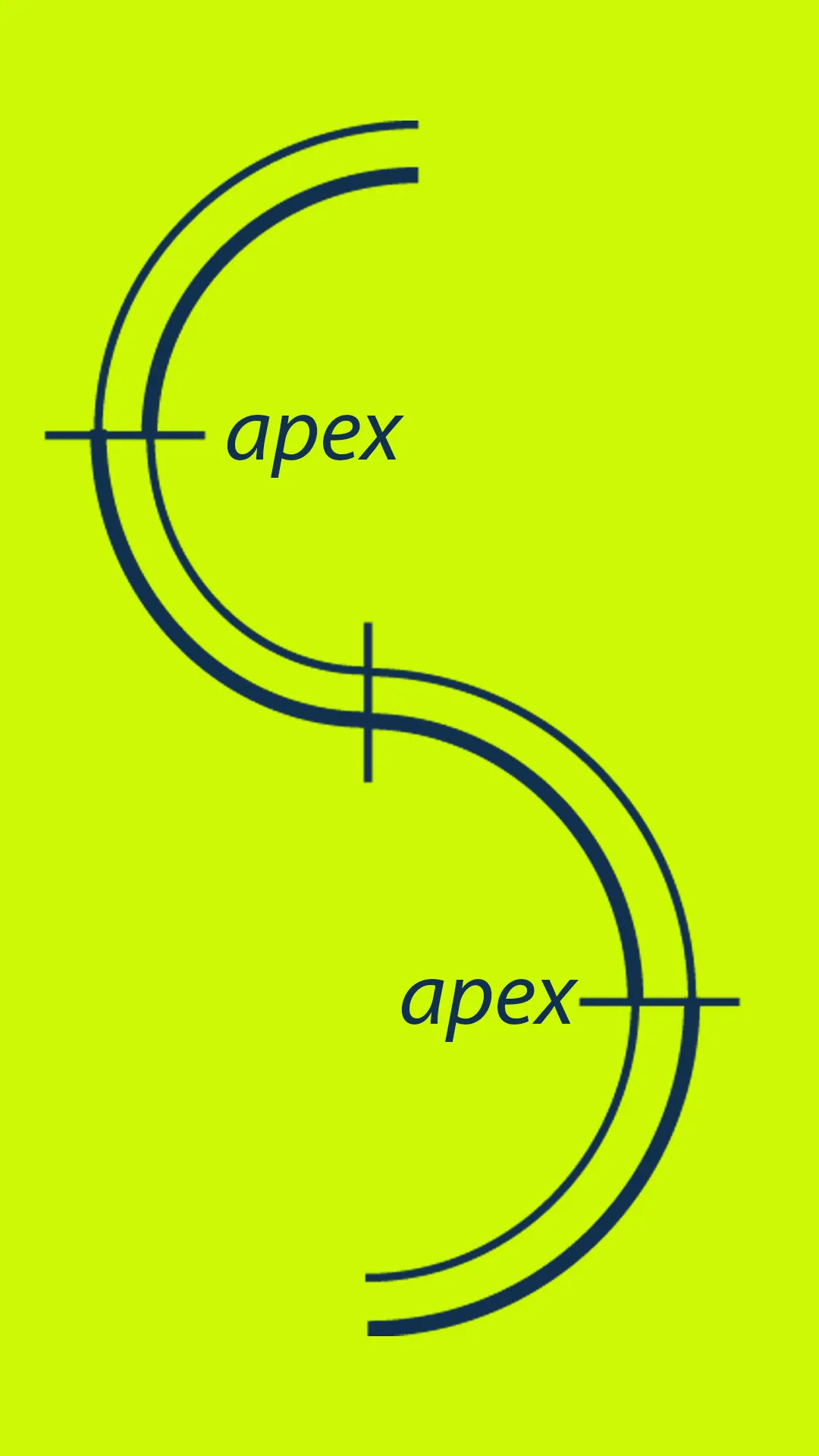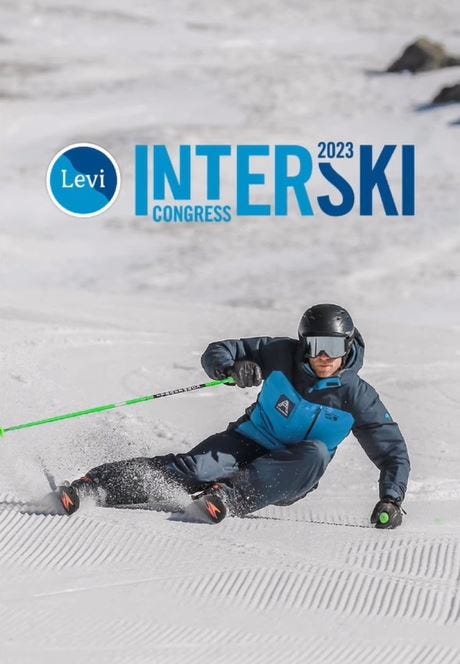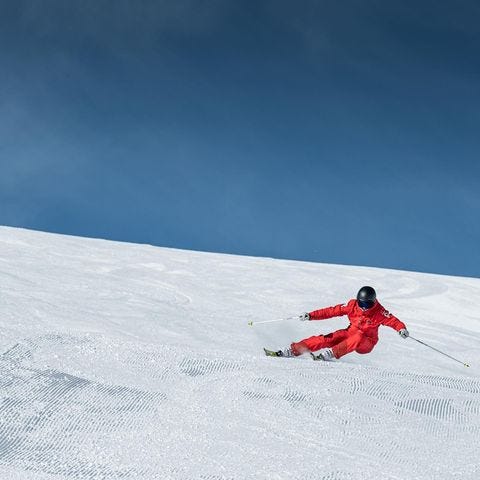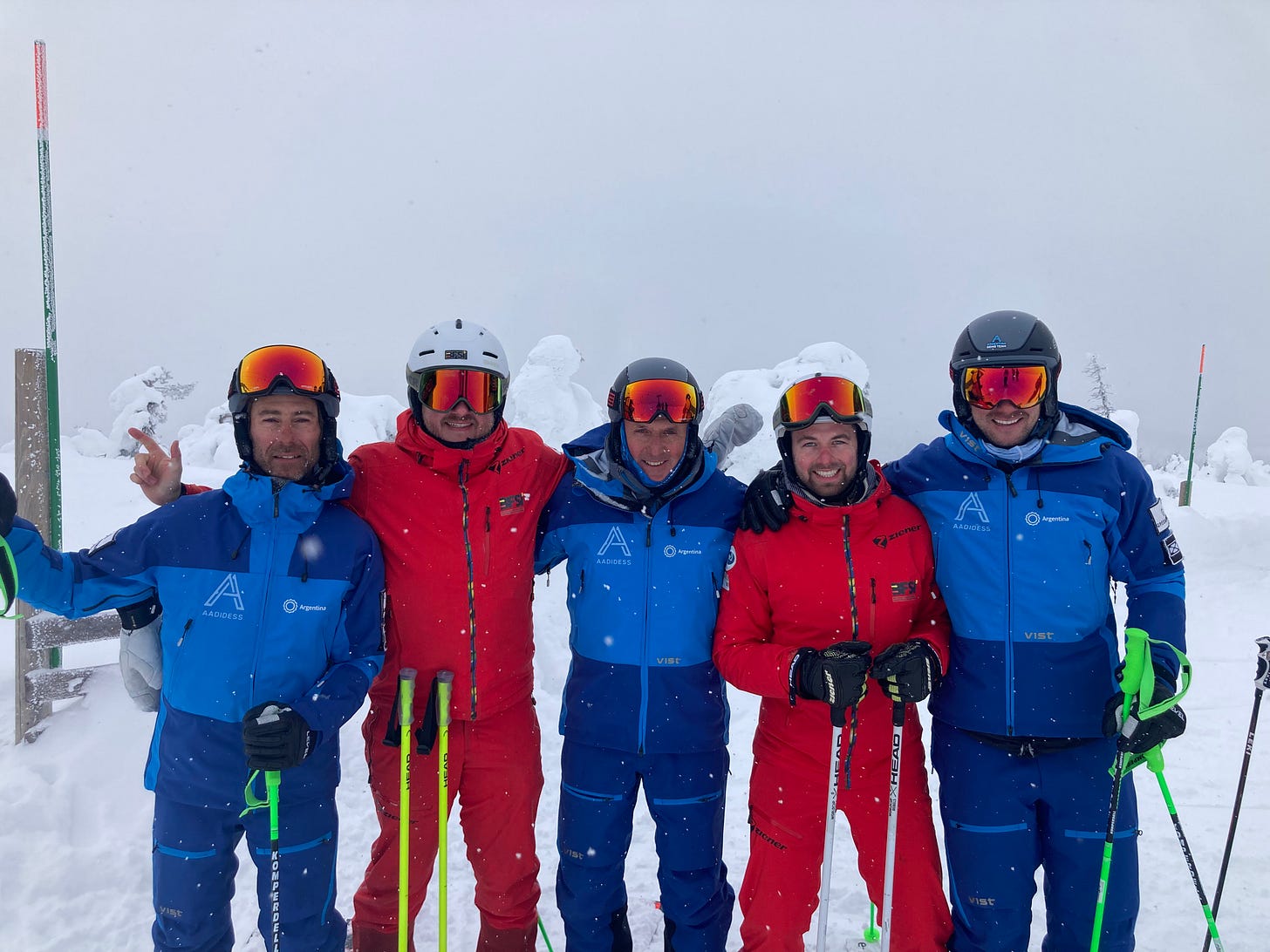The art of 'releasing to engage' – Interski 2023 discussion about Argentina's technical approach
This proves they're not just world-class at football...
Dear functional skiing reader,
So, I just got back from the biggest ski congress in the world: Interski 2023 in Levi, Finland.
And OH MY GOD, I had THE TIME OF MY LIFE.
I'm still buzzing with excitement from the incredible experiences I had at the conference.
From the tight performances with our Belgian demo team (shoutout to Paul Lorenz for the compliments) to the fascinating workshops organised by more than 30 countries, this global gathering for ski enthusiasts was a personal game-changer for me!
A huge high five to the Belgian Federation of Snowsport Instructors - it was great to travel there with such a large and motivated delegation.
Over the following months, I'll be reflecting multiple times on the things I had the chance to learn during my time at Interski 2023, and I'll be sharing these reflections with you.
Although I'm entering a busy period, I'll make every effort to continue sending out a monthly newsletter.
Let's discuss a very interesting workshop in today’s newsletter that I attended with the Argentines at Interski 2023.
Free season passes for the first skier to finish at the bottom…
Badass skiing by the Argentina demo team
A ski technical workshop led by the Argentina demo team was a personal highlight for me at Interski 2023.
The workshop, which was held outdoors on the last day of the congress, focused on their technical concepts. I was already impressed by their skiing during the show-runs, which was very smooth and effortless, and was eager to learn more about their approach to skiing.
Argentina apparently has a well-established skiing culture, particularly in the Andes mountain range, which runs through the western part of the country.
Many Argentineans take ski vacations during the winter months, and skiing is often seen as a popular leisure activity.
There are 14 ski resorts in Argentina. At 6962 m in altitude, “Aconcagua” in Argentina is by far the highest point in the Southern Hemisphere.
So, what is the technical perspective of the Argentina demo team on skiing? As it turns out, Argentineans are not just world-class in football, but also in interpreting the biomechanics of winter sports.
Maximizing the advantage of external forces
Kindly note that the following is not an exact transcription of what was narrated by the Argentinean instructors during the clinic. Since some elements of their workshop were biomechanically complex, I have simplified a couple of aspects for the sake of clarity.
Argentina’s technique is focused on taking advantage of these two things:
the mechanical characteristics of the skis
the reaction from the snow
They see efficiency as a process where you maximize skiing with (and not against) external forces while minimizing internal forces.
The most significant external force is gravity (which is a constant), but there are other variables (such as slope gradient or the compression of the snow) that come into play as well.
Internal forces are all the moves the skier has to execute to put effort into their turns, such as edging or rotary movements for example.
In a nutshell, this is what they believe:
Skiing = process where external forces > internal forces
I've encountered this philosophy before during my seasons in Myoko and while training with the Ski Association of Japan. Japanese instructors emphasized that high-performance skiing is about making the skis work for you, not the other way around.
What's fascinating is that the Argentina demo team explains the same philosophy from a different perspective, highlighting the subtle differences and similarities that are embedded in biomechanical principles. It's these nuances that make the sport so intriguing.
Moving alongside speed
Now, this is where it really gets interesting. During the clinic, it was cited that pressure control is essential when mastering the trajectory of your skis.
To explain this concept, they divided a full turn into two distinct phases:
Phase 1 - the divergent phase: This phase begins just after the edge change and extends up to the apex in the fall line.
Phase 2 - the convergent phase: This phase is essentially the reverse of the first phase and extends from just after passing the apex in the fall line up to the edge change.
Remember this image I made for my previous article on “the secrets of skiing with deflection”?
Interesting things happen during both phases.
At the divergency phase, the velocity (= the directional speed) of your skis will increase, and your edge angle should therefore also increase.
So, here it is necessary to keep rolling the ankles and flexing the inside leg to create the optimal conditions for a high edge angle.
At the convergency phase, however, the velocity of your skis will decrease again as your skis steer away from the fall line. It is important to compensate for this by decreasing your edge angle.
Here, the feet should not tip further, and you should already start flexing your outside leg to diminish the friction of your edges.
In summary, think of it like this when executing a carve turn at high speed:
Skis manoeuvre towards the apex of the turn → velocity goes up → edge angle should increase.
Skis move away from the apex of the turn → velocity goes down → edge angle should also decrease.
As the directional speed of your skis shoots up, your edge angle needs to increase.
Are you enjoying my newsletter so far?
Please consider buying me a beer:
deposit some money at BE 63 0013 0885 0908
BIC: GEBABEBB
Perfect turn loading…
Argentinean ski instructors often use the terms “active loading” and “passive loading” in their jargon.
In the first phase (=the divergency phase) you as a skier will have to actively load the skis. Makes sense: you are just coming out of a previous turn where the skis have been released.
They translate this active loading into a gradual extension of the outside leg.
Passive loading is also possible, but they see this rather as maintaining an isometric tension that should always be proportional to the response you get back from the terrain.
As the load on the skis increases beyond a critical point, you will have to compensate for this by actively absorbing the energy from the skis by flexing the outside leg.
Passive absorption is always done by gradually flexing and not performing this absorption too abruptly. In a way, you still need to resist centripetal force pushing against your skis here. This resistance needs to be in proportion to the reaction you get back from the snow.
This advice brings to mind once again what my former Japanese mentors used to tell me: let the skis travel underneath your body. Although it may seem like a quick motion, it actually requires a lot of patience and deliberate, unhurried movement.
This absorption is followed, according to the Argentines, by unloading and untipping the downhill ski while engaging the uphill ski to find its new edge.
By always tipping over the downhill ski first, the Argentines aim for a very rapid edge change. There is no up & forward movement or extension of either leg, the body’s centre of mass remains low and immediately crosses over the skis at the edge change.
Throughout, they aim to make use of centripetal force that keeps swinging the skis to the inside of each turn.
Crucial to them is the point of turn transition: they see this as a neutral phase where the skis and the body's centre of gravity meet for a brief moment, and where one centripetal force is dissolved so that the one from the opposite side can take over again.
An Argentinean demo skier at work…
Spot how a gradual extension of the outside leg actively loads the skis.
Release to engage
In this clinic, they frequently elaborated on a ‘release to engage’-movement when explaining the way they like to change edges. The skis must always be released before they can be put back into an attacking mode.
This concept is virtually the same as a so called ‘flex to release’. Releasing the skis is always done from an intelligent new inside foot, where the rolling of this foot is used to initiate a new turn every single time.
I was pleasantly surprised to see this movement cited by them. It immediately reminded me of a movement I've read about on Harald Harb’s blog. When I spoke to one of the Argentinean demo skiers about this after the clinic, he confessed that he was a big fan of Harald Harb's work.
A while ago, I also personally wrote my thoughts about this on my Instagram-account. The idea here is that the rolling of the inside ski always leads to the rolling of the outside ski.
Your inside ski acts as a dominant, guiding force…
The Argentinean instructors also emphasized the importance of this “release to engage” movement in their teaching philosophy. This means that, from the very beginning of their lesson plans, they teach skiing from the perspective of releasing one turn to engage the next.
They strongly believe in this principle of an intelligent inside foot to further maximize efficiency.
Above all, their skiing technique & philosophy consists of maintaining pressure throughout the turn and consistently releasing it at the right moment. By controlling pressure, they can maintain a smooth and stable line throughout the arc, even in difficult conditions.
One of the most striking things about this clinic was the attention to detail. They placed a great deal of emphasis on body position and alignment, ensuring that each skier was making the most efficient movements possible.
They also stressed the importance of being aware of your body and the sensations you experience while skiing to easily make adjustments and improve your technique.
Overall, I was thoroughly impressed by the Argentinean instructors' approach to skiing and this clinic. Their focus on functional efficiency and attention to detail made for a truly enlightening and enjoyable clinic. I left feeling inspired and excited to implement what I had learned in my own skiing.
If you ever have the opportunity to ski with the Argentinean demo team or train with an Argentinean instructor, I highly recommend it. 😉
Curious about the Interski runs of our Belgian demo team?
Check out our four runs below!
Skiers: Niels Craenen - Kevin Wery - Sander Moons - Sven Vandenberghe
Did you enjoy this newsletter?
Please consider buying me a beer:
deposit some money at BE 63 0013 0885 0908
BIC: GEBABEBB










